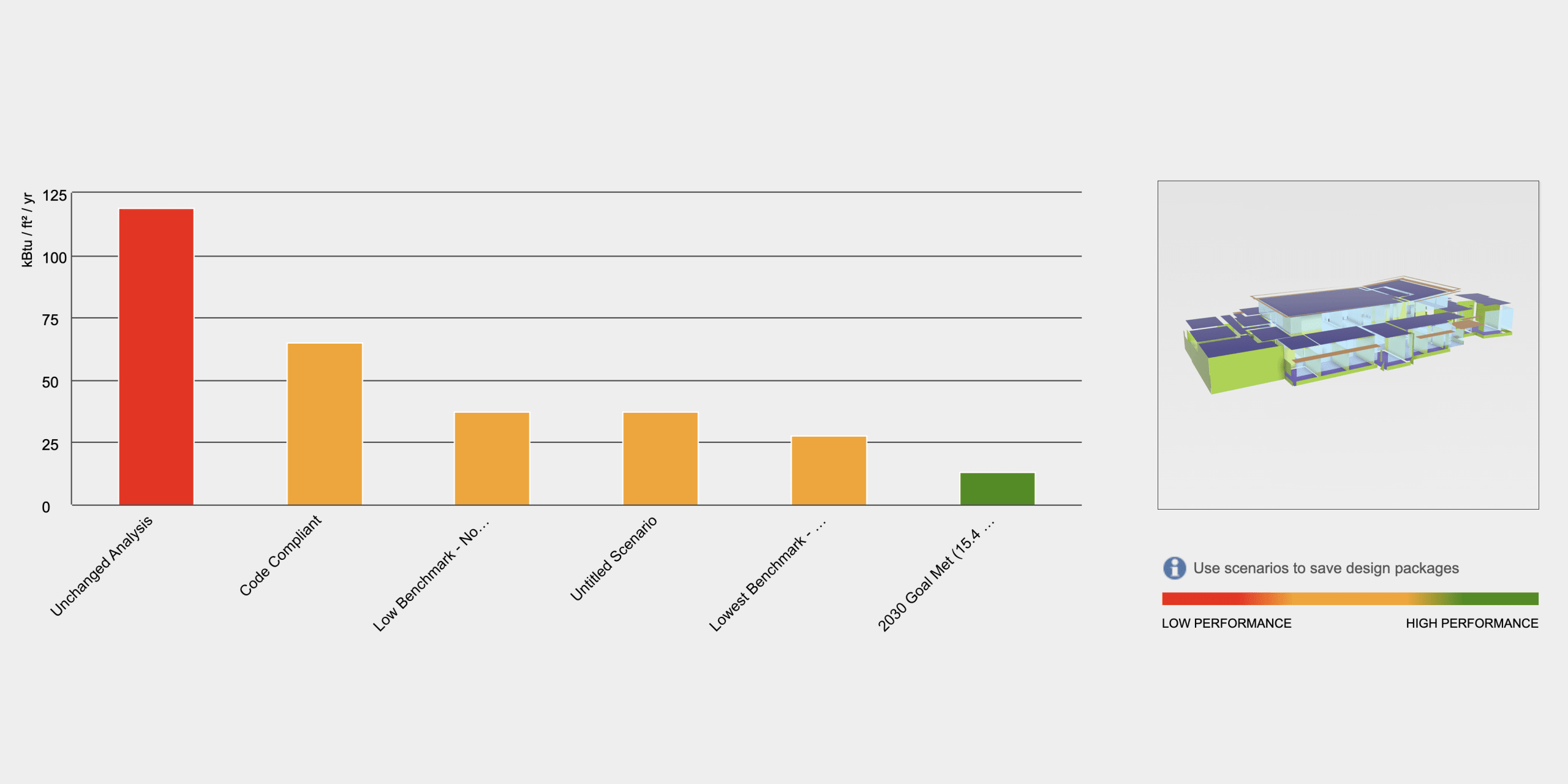
As a signatory firm of the 2030 Challenge, Shelter is implementing ways to better understand — and improve — the sustainability and energy efficiency of our designs. One technique we use is energy modeling.
An energy model is a computer model that helps designers understand how much energy a building will use — or is currently using. There are many types of energy models. Some focus on a specific influencing factor, such as the amount of sunlight that fills a room. Others provide more general insight by, for example, calculating overall energy consumption.
Often, we use energy models to predict energy use intensity (EUI). The EUI of a building design tells us how much energy the finished structure will likely use per square foot, per year. When we work with an energy model, our goal is to understand how our design decisions affect a building’s EUI. Many factors — including building orientation, lighting efficiency, the number of windows, the type of roof construction and the efficiency of the HVAC system — can have huge impacts. Honing designs to achieve a lower EUI means we can expect less harm to the environment — and lower energy costs for our clients.
At Shelter, we create energy models with Insight 360, a tool that works hand-in-hand with Revit, the building information modeling (BIM) software we use to create our drawings and 3D building models. As we design, we create not only a digital model of a structure, but also a repository of embedded information about objects used within that space. For example, we can store data about a single light fixture’s brightness, color and efficiency. Insight 360 can then output a series of comparison charts to help us better understand, on a broad scale, what adjustments we can make during design phases that will most effectively reduce a new building’s environmental footprint.
Related Posts
Waste not, want not: embracing material reuse in design
Thoughts from Shelter team member Jakob Mahla Is adaptive reuse the answer? It’s no secret that the buildings that surround…
Read moreSustainable design can serve your cannabis business
When budding cannabis entrepreneurs think green, they often have more than plants and profits in mind. As business owners prepare…
Read morePursuing petals: Shelter embraces the Living Building Challenge
Here’s to the belief that things must change. To using fewer resources. To creating fewer toxins. To nourishing our spirit…
Read more